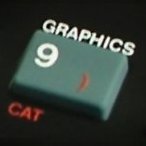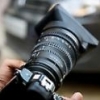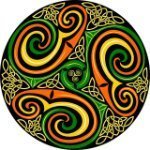-
Posts
2,892 -
Joined
Profile Information
-
Gender
Male
-
Location
Spain
-
Interests
Traditional painting, illustration, graphic design (web and print), game artwork (every profile), comic creation, 2D/3D animation, 3D modeling, pixel art (UI and games), web design, web development.
-
Member Title
SrPx
Recent Profile Visitors
20,814 profile views
-
 SrPx reacted to a post in a topic:
Flowing Water - Macro
SrPx reacted to a post in a topic:
Flowing Water - Macro
-
 SrPx reacted to a post in a topic:
My latest, black/white photo from my hometown Nyköping the year 1945 now in colour
SrPx reacted to a post in a topic:
My latest, black/white photo from my hometown Nyköping the year 1945 now in colour
-
 SrPx reacted to a post in a topic:
My latest, black/white photo from my hometown Nyköping the year 1945 now in colour
SrPx reacted to a post in a topic:
My latest, black/white photo from my hometown Nyköping the year 1945 now in colour
-
 SrPx reacted to a post in a topic:
My latest, black/white photo from my hometown Nyköping the year 1945 now in colour
SrPx reacted to a post in a topic:
My latest, black/white photo from my hometown Nyköping the year 1945 now in colour
-
 SrPx reacted to a post in a topic:
Audi TT Roadster Cartoon
SrPx reacted to a post in a topic:
Audi TT Roadster Cartoon
-
 SrPx reacted to a post in a topic:
YPPERLIG Banc IKEA
SrPx reacted to a post in a topic:
YPPERLIG Banc IKEA
-
 SrPx reacted to a post in a topic:
Black & Gold 01
SrPx reacted to a post in a topic:
Black & Gold 01
-
 SrPx reacted to a post in a topic:
Too quiet …
SrPx reacted to a post in a topic:
Too quiet …
-
 SrPx reacted to a post in a topic:
Too quiet …
SrPx reacted to a post in a topic:
Too quiet …
-
 SrPx reacted to a post in a topic:
Introduce Yourself
SrPx reacted to a post in a topic:
Introduce Yourself
-
Indeed, a big part of the problems many people have currently with Adobe, are more related to AI (transparency about the scrapped sources, other matters, but also as many creatives are not "loving" the entire concept of AI (specially for full generation), due to well documented issues) and certain -kind of recent- wording changes in their TOS, than with their subscription system, although all that clearly continues creating a users niche that is going to stick to Affinity and other tools for a very long while. Very often, it is not about fully replacing an user base, neither it is really relevant which suite or tool has more users in absolute numbers. Many solutions just thrive for having become a very reasonable (even if nothing is ever perfect) response for the needs of a certain users niche. Affinity is clearly that. For many. For those who it is not, they are already back in Adobe, I suppose (or not).
-
 PaulEC reacted to a post in a topic:
Too quiet …
PaulEC reacted to a post in a topic:
Too quiet …
-
 Alfred reacted to a post in a topic:
Too quiet …
Alfred reacted to a post in a topic:
Too quiet …
-
 Mithferion reacted to a post in a topic:
Too quiet …
Mithferion reacted to a post in a topic:
Too quiet …
-
 Ldina reacted to a post in a topic:
Too quiet …
Ldina reacted to a post in a topic:
Too quiet …
-
SrPx started following Merge visible at top of layer stack changes image , Too quiet … , DAUB Pigmento - 132 Natural Media raster brushes and 3 others
-
I must admit I quite don't understand the anxiety. Maybe I was too used in the very distant past (90s) to no other option than Adobe (not even abandonware, I'd have been happy with that!) And then so many years of stagnation (or just no adaptation to professional needs) of multiple open source alternatives. As much as I love and use them. I mostly use Affinity Photo of the suite, and it serves me greatly (Designer too, but lately I am doing less design stuff). I really like it (Photo) for painting and editing. It has been updated recently, several times. So.. I really don't get it, honestly. Just no news or no forum activity? (the reason of the worries). Also that I remember how many years a large portion of the digital painting community just used a never updated beta version of SAI or OpenCanvas. People only cared about if they could paint with the thing, no matter how arcane and never updated. Between open source and other alternatives, I have always installed a bunch of tools. I mean, gonna push pixels (and vectors) one way or the other, lol... (Plus...the tools are imo the smallest problem right now for creative fields...)
-

daubbrushes DAUB Pigmento - 132 Natural Media raster brushes
SrPx replied to paolo.limoncelli's topic in Resources
GORGEOUS.- 61 replies
-
- natural media
- brushes
-
(and 2 more)
Tagged with:
-
 walt.farrell reacted to a post in a topic:
Machine Learning: Object Selection Tool
walt.farrell reacted to a post in a topic:
Machine Learning: Object Selection Tool
-
 nezumi reacted to a post in a topic:
Machine Learning: Object Selection Tool
nezumi reacted to a post in a topic:
Machine Learning: Object Selection Tool
-
 nezumi reacted to a post in a topic:
Machine Learning: Object Selection Tool
nezumi reacted to a post in a topic:
Machine Learning: Object Selection Tool
-
 paolo.limoncelli reacted to a post in a topic:
DAUB Pigmento - 132 Natural Media raster brushes
paolo.limoncelli reacted to a post in a topic:
DAUB Pigmento - 132 Natural Media raster brushes
-
 Ldina reacted to a post in a topic:
Bigfoot LIVES!!
Ldina reacted to a post in a topic:
Bigfoot LIVES!!
-

Machine Learning: Object Selection Tool
SrPx replied to Patrick Connor's topic in New Features and Improvements in 2.6 Beta
I was worried about if at some point the models would get bundled in or something (in the future). Doesn't seem they will (hopefully). Thank you. -

daubbrushes DAUB Pigmento - 132 Natural Media raster brushes
SrPx replied to paolo.limoncelli's topic in Resources
HUGE KUDOS !! Traditional oils & acrylics lover here, always loving pigmento brushes' updates. As someone who got your Super Bundle (still to try the new pencils in CSP, been busy...) and so many excellent brushes that you have made for so long time.- 61 replies
-
- natural media
- brushes
-
(and 2 more)
Tagged with:
-

Machine Learning: Object Selection Tool
SrPx replied to Patrick Connor's topic in New Features and Improvements in 2.6 Beta
Fully optional? Can we get the next versions without any AI/ML feature (if chosen so), or will there be integrated parts yes or yes? (I ask because I truly don't know) -
Fangorn aka Treebeard!!
-

multi 1950s-style ‘Creature Feature’ movie title still experiments
SrPx replied to GarryP's topic in Share your work
Carlitos Carlitos is not a fox... but starting to doubt the lad is human... -

multi 1950s-style ‘Creature Feature’ movie title still experiments
SrPx replied to GarryP's topic in Share your work
I might sound like a 'TV shows illiterate' (not really, but that one....) but I've never watched a single Doctor Who episode... Now, if it's like the route sci fi is taking these days in every show and film, I guess you mean all that of the parallel universes (yet never proved) and multiple versions of same subject. So, we're never seeing the same fox. Then each fox doesn't necessarily have the same experiences than the previous fox, and thus, keeps jumping over the lazy dog every time as it doesn't know better. Poor fox. Now, that's a sleepy dog, too. -

multi 1950s-style ‘Creature Feature’ movie title still experiments
SrPx replied to GarryP's topic in Share your work
That fox must be really tired. All these years jumping non stop... -
After playing a bit with your uploaded file and looking up close (quite zoomed in), it appears to me that (MAYBE) could be that when the live filters, contrast, etc are still "live" they are actually of lower quality than once merged (as looking it in detail, pixel level, the merged image seems of higher quality, even if different in colors and tones, but also less "pixelated"). In this particular image, with tons of small details (horrible for mipmapping in zoomed out, but I tested always at 100% or lower), the image previous to merging /flattening is of lower quality, so, the problem would be perhaps more in the filters and live stuff (maybe for optimization) than in the actual final merge, which indeed it is seeming to me that merges "to higher quality" but then the result is different to what you were visually controlling (which yes, can be a problem). Probably more noticeable with some images than others. And this one seems to have a combination of factors to produce that more. It could also be that ... the merge, or more likely, the filters are not considering the color profile or image depth (16 bits) fully, and the operation is happening with less range, or a different color profile (until the revamp called "space invasion", based on the GEGL library , Gimp suffered of all or most of the layer effects happening in sRGB (and dunno if 8 bits). Something similar in PaintShop Pro, if I recall well). I don't know. I tested freeing up all live stuff (no visual changes, btw), and then trying different ways of merging (always producing the problem) and also dragging the live stuff over the one background layer (on top, as is 100%) and while doing so no visual change happened, the final merge or rasterization always generates the problem. What I couldn't explain is why when I merged the 3 background layers (which should have no effect, as the one on top of the 3 is at 100% opacity and is (the 3 are) solely a pixel rendered layer!), without touching anything else, and at 100% zoom, I already saw some changes that should never occur doing that, IMO (darkening of some subtle areas). Could this be a bug? I am more and more suspecting that the live stuff is like in a temp mode not fully the final-final render and it is what is introducing this. I am not a photographer but a digital painter, so I had not noticed this as I apply filters non live or only one by one, so I kind of control it more so (but also is less of an issue when illustrating or painting). About if it happens in Photoshop... well, the last time I used it (some years ago, but not many, and I had been using it since 1995) you could happen to find some issues when using complex groups of layers with different layer blending modes and some live stuff. But I learned some tricks (typically rendering with intermediate pixels layers, and other tricks) to avoid issues. Still not gone into that with Affinity, as I haven't needed it. I don't know if Adobe has fixed those problems, though. I know I could avoid any issue with certain workflows, so it was a non-issue for me. I would always love a priority on quality of viewing, and viewing "pixel perfect" accuracy or... even if by default they set "high performance" mode on, for the mass of users, specially many people that don't fine tune stuff for professional work, but that there would be some preference settings for "full accuracy" that we could configure for viewport accuracy. Also it would be lovely to have more control over the Lanczos export (in every file format), like a slider with a preview window... or even if just the slider (we could do personal tests) as (I never remember which is which) one of the modes ('separated' or 'non separated') is too "smooth" as in, a bit blurry, and the sharper one is way too sharp, forcing some halos similar to when you went too heavy with an unsharp mask (or any sharpen filter) setting. I still can't find an explanation of why merging (ctrl + shift + e), or doing a group of them and the rasterizing the group of solely the 3 pixel layers (the 3 backgrounds) being the one on top at 100% opacity, how or why does this alters what I am viewing (the live stuff above should not matter), as this would never happen in Photoshop or many other image editors, and also, as it complicates quite the workflows. My only explanation is that it's all working for a "perception", but it is not tied to the raw pixels in the way we usually think (in most 2D raster applications). If someone can throw some light at this, I'd be quite grateful. I personally have no huge issues with this (as I said, several live filters and layer effects in Photoshop did have important "usability" issues) as I mostly paint and can do stuff "under control", but it'd be really good any improvement in this whole area.
-
Great! I'm happy that it solved it I had got to that conclusion by trial and error. Usually needing to restart the app to see the effect, after the preferences change. Back then I had just a nvidia GTX 1650 and the trick worked with it. Since a while I installed a RTX 3060 (in both my 3900X desktop and 12700h laptop), and Affinity apps function way more smoothly. Probably also due to vast improvements made by Affinity's developers since 1.x (if my tests were correct, already in the latest 2 or 3 versions of 1.x, but improved even more in 2.x). I don't know what is painting lag anymore with Affinity Photo in 2.5x version and this PC; I just don't see it anymore even in bigger canvases than I actually need them to be. In my understanding, with Open CL off, it still completely uses the GPU, though! (unless you set "WARP" (kind of software-only mode) , instead of your GPU model, in Affinity's preferences. I any Affinity desktop/laptop app). By deselecting Open CL it just does not use the (mostly AMD related,) advantages of that library, if I got it right. But I think Affinity software uses quite a lot the CPU, it benefits from both (GPU, CPU) components capabilities (and performance can be poor if those components are too bad), and RAM, disc, etc. I am still storing the working file and editing each project on good ol' HDDs, even Affinity apps installations are there (not ideal, I know), and yet Affinity Photo allows me to paint on large canvases with no hiccup at all (my operating system is always on a SSD).
-
Maybe you are considering the stamp, burn, blur, etc, as brushes as well (maybe they are called "brush tools" in the manual/help, in this software). I mostly use the actual brush for painting, but in some projects I need to use those tools, too (not in "pure painting", though). And.. when using those I do really need the brush outline. Also depends on the device. Brightness, resolution, the screen's refresh rate (sadly my Eizo has the "typical" 60 hz), it all modifies the perception while working. Something that is not disturbing at all in my 12 inches Samsung tab S7 FE (due to screen size and other factors) , becomes annoying on a 24" inches monitor. For the people working mostly on pen displays it is more the case, as they are literally working over the screen, super close to it. But yep, different people have different sensitivity to it... reason why it is often included enough options for cursors, in 2D software . And more importantly, the type of use! I don't mind it at all when doing image editing (do you paint a lot? Realistic/detailed digital paint?) but it's a problem while painting. And if painting was a 10% of my activity, probably I wouldn't bother (too much). Even more, depends on the type of painting. Simplistic, bold artwork, or abstract, etc, maybe has less of a problem with this. Even in realistic or other detailed styles, if the painter uses a very different technique. But build-up or constant glazing is quite common among painters (digital and traditional painters) and that requires fast color pickup and fast painting, in most cases.







